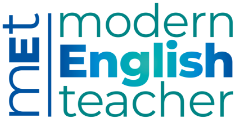I’m a YL teacher of English, why should I consider all that?
All children have different needs, levels, interests and maturity levels. This article describes some activities and approaches to make your teaching meaningful and engaging.

With increasing frequency, I find I bump into trainees, fresh from their CELTA, who find themselves in front of a YL class. I’m sure I’m not the only one meeting these new teachers, who are keen, know the language, but seem to have a total lack of understanding of age-appropriate teaching methodologies and activities and limited to no awareness of appropriate classroom management techniques. And this unsettles me, as often little learning seems to happen in such circumstances, but more importantly, I fear that it might, dare I say it, endanger children’s love of learning.
Of course, we can’t really blame those teachers in that particular situation. I mean, the YL-extension to the CELTA course is no longer available and there are schools that have the tendency to place those fresh from initial training courses in the YL classroom. Why? Maybe they believe that teaching young learners is easy and only requires some glue and scissors? Personally, I’ve always believed that we don’t teach a language, we teach people! And teaching a group of little ones is one of the biggest responsibilities a teacher can take on. Perhaps this is due to my career as a teacher, which included time and training as a primary teacher, which taught me to adapt what I do in the classroom to my audience: my learners’ interests, needs and developmental level. For that, I’ve spent time learning about child psychology and child development during my PGCE, the YL-extension but also in my free time as I’ve always regarded my professional learning as a priority.
Looking at teaching English to Young Learners (TEYL) I believe, considering the impact we can have on our audience, it is an even more responsible role than any adult context. Our profession has come a long way, but our rapidly changing world requires more. Most of us now embrace the focus on 21st century skills (I hate this term as, I mean, didn’t we communicate, collaborate or think creatively and critically before this century?) but there are still various other issues that should become the norm in the TEYL classroom.
As far as I’m concerned, the most essential requirement for effective teaching of young learners is that teachers understand, to some extent, the underlying principles of child development; how children learn and, more importantly, when they don’t learn! Providing young learners with a solid foundation in English requires knowledge about their different developmental stages, for example teaching primary is completely different to teaching pre-primary!
Besides this, teachers need to know that it is normal for learners in one class to be of different levels. I’m not saying this is easy to manage but this is the world of child development; children are unique, they develop at different speeds and at different times. Whereas it is certainly too much to ask for teachers to know everything about Special Educational Needs (SEN), a basic awareness is also incredibly helpful, and teachers certainly need to develop an understanding of principles of differentiation. This empowers us to provide an environment of inclusion and equity and to enable all of our learners to progress to their next level. Of course, this might add extra work to our planning, but it is paramount that YL teachers know how to cope if they want to support all learners in developing essential early literacy skills.
Whilst there are many other things I can list that should be part of your repertoire as a dedicated YL teacher and become the norm in our lessons, such as developing learners’ global skills and intercultural awareness, one area I feel particularly strongly about is developing learners’ social-emotional learning skills. Developing the skills to relate to others, to manage oneself in this diverse world, but above all to be self-aware are not only essential skills for holistic development of young learners in our care but seem more needed than ever in our current times. A world where managing well-being and being able to live in harmony with others are sorely needed competences. And quite frankly, teachers themselves can benefit greatly from further developing these skills.
If you ask me for one approach that helps incorporate some of these aspects into our teaching, I’d propose using picture books as the way forward. They engage young learners and provide a meaningful context to get various aspects across to our learners in an age-accessible way. We just need to make sure appropriate picture books are selected for our learners.
I believe I’ve made my point clear: there’s more to teaching YLs than knowing and teaching the language. I hope this short overview helps to identify some key areas for your or your organisation’s development where you work with YLs. Teaching young learners is not about us, it’s about them and maximising their learning opportunities so they can not just survive in English, but truly thrive in life, achieve their dreams and make this world a better place. That’s worth a little of our own time doing some research and planning, don’t you think?



